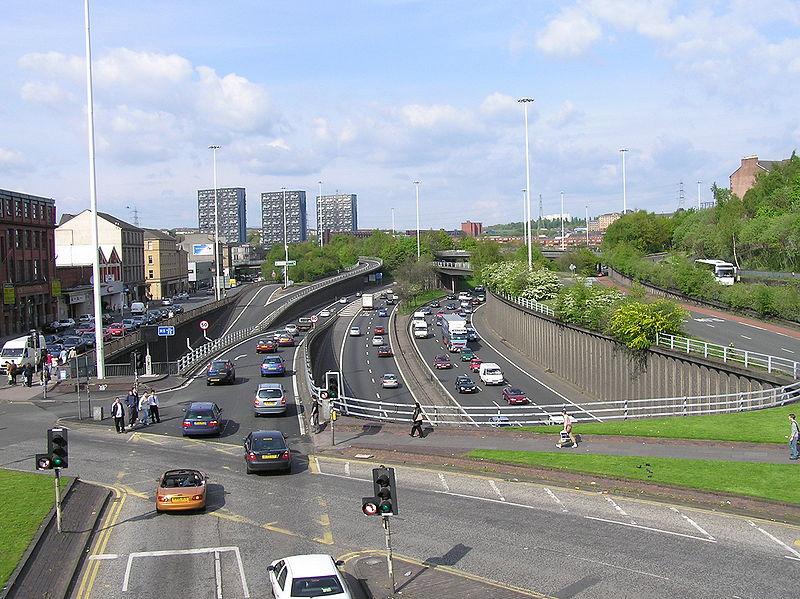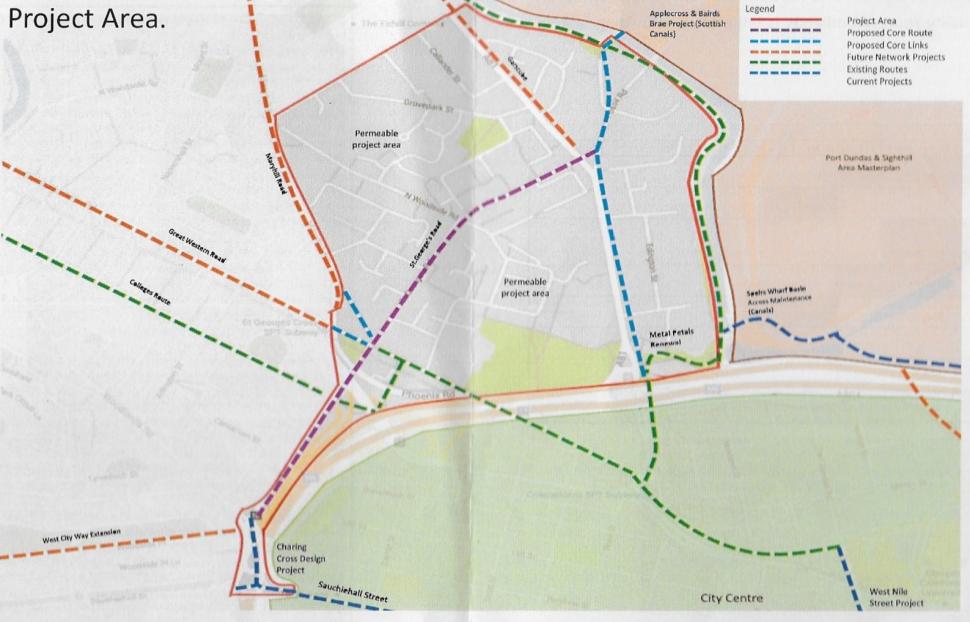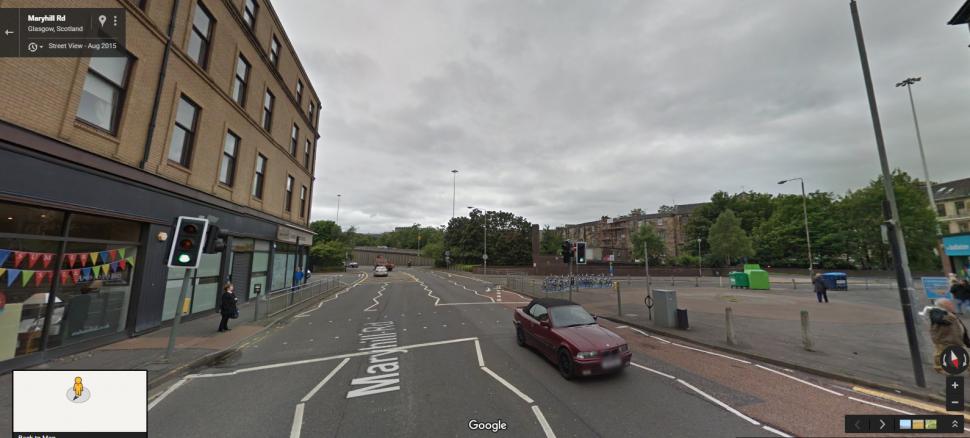- News
- Reviews
- Bikes
- Components
- Bar tape & grips
- Bottom brackets
- Brake & gear cables
- Brake & STI levers
- Brake pads & spares
- Brakes
- Cassettes & freewheels
- Chains
- Chainsets & chainrings
- Derailleurs - front
- Derailleurs - rear
- Forks
- Gear levers & shifters
- Groupsets
- Handlebars & extensions
- Headsets
- Hubs
- Inner tubes
- Pedals
- Quick releases & skewers
- Saddles
- Seatposts
- Stems
- Wheels
- Tyres
- Tubeless valves
- Accessories
- Accessories - misc
- Computer mounts
- Bags
- Bar ends
- Bike bags & cases
- Bottle cages
- Bottles
- Cameras
- Car racks
- Child seats
- Computers
- Glasses
- GPS units
- Helmets
- Lights - front
- Lights - rear
- Lights - sets
- Locks
- Mirrors
- Mudguards
- Racks
- Pumps & CO2 inflators
- Puncture kits
- Reflectives
- Smart watches
- Stands and racks
- Trailers
- Clothing
- Health, fitness and nutrition
- Tools and workshop
- Miscellaneous
- Buyers Guides
- Features
- Forum
- Recommends
- Podcast
news
 Glasgow Traffic (2).jpg
Glasgow Traffic (2).jpgGlasgow's £12m "Mini Holland" bid revealed
Plans for Glasgow’s £12m “Mini Holland” bid have been revealed, and road.cc has had a sneak peak at them.
The Woodside Mini Holland bid is aiming at Sustrans Scotland’s “Community Links” fund to create a cycling and walking network in a city district North of the Clyde. Although Glasgow’s bid is one of five that made it to “stage three” of the process, it is up against bids from Edinburgh and Inverness, and, at most, just two will get the funding.
Campaigners say the plans for a network of cycle routes, linking homes to schools and places of work and leisure, have transformative potential, but rather than cities competing to be one of at most two successful bids, funds from Scotland’s ‘bloated’ road building programme should be reallocated so they can all happen.
Glasgow bidding for £12 million to convert the city into a mini-Holland
One Glasgow campaigner, who goes by the name Car-Sick Glasgow, told road.cc: “The Mini-Holland has to potential to bring about a step-change in cycling provision in the Woodside area. A complete network of Dutch-style segregated cycleways, complemented by filtered permeability on the back streets, would be truly transformative. It’s vital that this is the high standard to which the work is done.
He added: “Unfortunately, the scheme is competing with a number of others across Scotland. The Scottish Government has decided that only one or two will be funded. I’ve no interest in seeing Edinburgh or anywhere else denied its own safe cycling infrastructure; the Scottish Government should fund every single one of the “exemplar” schemes by reallocating money from its bloated road-building programme.”
Image from Mini Holland bid document - map of proposed cycle network
Glasgow City Council’s plans comprise “core routes” linking to a wider network (pictured above).
In its bid document the Council says: “The project will promote cycling not only as the environmentally responsible way of getting around but the normal way. Proposals will link to existing and proposed routes, driving connectivity to academic, social and cultural venues, and local subway stations.”
“The ongoing development of Glasgow’s City Ways is aimed at getting non-cyclists onto bikes through the construction of safe cycle ways suitable for all.”
St George's Cross - a protected bike lane and public realm improvements are part of Glasgow's £12m bid, and "imperative" to the scheme's success, according to the City Council. Image from Google Streetview
The council notes housing in Woodside is primarily tenement flats linked by quiet streets, making it ideal for cycling.
Key parts of the proposal include:
- A protected cycle route – a “core route” - from tenement housing in Woodside to places of work, study and leisure, in Glasgow’s City Centre and West End. This would link to a protected cycle route on Sauchiehall Street, which is due to be completed in 2017.
- “Core links” from the new protected route to the existing cycle network and areas of redevelopment in Sighthill and Port Dundas.
- “Permeable” areas where residential streets are “filtered”, using i.e. planters and bollards, so people cycling and walking can get through but rat-running traffic can’t
- “Place making” scheme at St George’s Cross, a wide junction outside a subway station in an area which was partially destroyed in the 1960s by the M8 construction. Improvements include better crossings and cycle parking
- Safer routes to schools.
- Secure cycle parking
The project name is inspired by Dutch neighbourhoods, where it tends to be easier to walk and cycle than drive, through use of protected cycle routes on main roads and “filtered permeability” on residential streets, prioritising cycle and walking access over rat runs for motor vehicles. Three projects of the same name are currently underway in outer London, each with around £30m funding to encourage more shorter journeys by bike and foot.
Glasgow City Council has a vision “to create a vibrant cycling city were cycling is safe, accessible, safe and attractive to all”.
Laura Laker is a freelance journalist with more than a decade’s experience covering cycling, walking and wheeling (and other means of transport). Beginning her career with road.cc, Laura has also written for national and specialist titles of all stripes. One part of the popular Streets Ahead podcast, she sometimes appears as a talking head on TV and radio, and in real life at conferences and festivals. She is also the author of Potholes and Pavements: a Bumpy Ride on Britain’s National Cycle Network.
Latest Comments
- McVittees 11 min 42 sec ago
Will they get all the costs of the theft covered by insurance?
- Hirsute 12 min 33 sec ago
Up yours cyclist. I must remember to cycle on the wrong side of the road to avoid this.
- Pura Velo 16 min 41 sec ago
A shame to see a long standing name from the custom wheel building community fall victim to the industries woes. ...
- BikingBud 35 min 32 sec ago
They were trying to avoid the overhanging windows!! Seems like somebody else has scraped the top of the wall before.
- JMcL_Ireland 57 min 8 sec ago
Simplicity goes a long way. Means testing will make it expensive to administer and ultimately defeats the purpose in the same way that the...
- StevenCrook 1 hour 7 min ago
But only if the police recover it. Once it's been sold on? The chances of that are vanishingly small....
- Bigfoz 29 min 52 sec ago
With WBD having taken Discovery+ sports behind a significant paywall (Cycling, SPorts cars, Superbikes, MotoGP, British Superbikes etc etc)...
- biking59boomer 1 hour 21 min ago
TBH, this kind of stupidity is best ignored. By publicly responding we're giving them free publicity.
- biking59boomer 1 hour 31 min ago
Unfortunately politics is the problem. Our councillors pander to the anti-cyclist NIMBYs, especially when local elections are due. The government...
- biking59boomer 1 hour 36 min ago
Only if you're aiming it at over 60s


Add new comment
6 comments
Oldstrath wrote: "I have no interest in cycling on the A9 - I live close enough to hear the emergency vehicles when the crashes happen. I agree the design is poor, but I would blame driver behaviour for many of the crashes - if people didn't try for one last pass before the single carriageway, and were happy to drive at or below the speed limit (in short, were patient) there'd be a lot less of a problem."
Yep, can't argue with that.
Oldstrath wrote: "And I'm not contrasting this with "a few yards in Glasgow". They could build a lot of usable cycle routes (including a real alternative to the A9) for the money spent on this."
I don't see where they could put an alternative without incurring tremendous cost. I'm hoping the powers that be have the foresight to ensure that the considerable cost of the upgrade includes cycle/pedestrian lanes and safe crossing places.
Current cost estimate for dualling the A9, so that the motorists can speed a bit more safely, £3 bn. Sort of puts the SNP's enviro-piffle in perspective.
Try cycling (or even driving) on parts of this stretch of road then come back and talk of enviro-piffle.
The part of the A9 being upgraded is the 112 mile stretch between Perth and Inverness which is an accident blackspot on which scores of people, including cyclists, have been killed over the years. The cause is the dangerous switches between stretches of dual carriageway and A-class road. Anyone who frequently travels this road will be familiar with the wreckage and the ancillary emergency services to seen on a regular basis.
It was the intention of the Scottish (minority) government to upgrade it in 2007, but they were outvoted by the Tory/Labour alliance who voted instead to spend the money on the unneeded, unwanted Edinburgh tram system. The upgrade is many, many years overdue and had been held back further because of constant objections from landowners along that stretch. If it saves scores of lives (me, my family's and friends included) in years to come, I think it will be money well spent. Contrasting it with a few yards in Glasgow for the purpose of petty political point scoring is puerile.
I have no interest in cycling on the A9 - I live close enough to hear the emergency vehicles when the crashes happen. I agree the design is poor, but I would blame driver behaviour for many of the crashes - if people didn't try for one last pass before the single carriageway, and were happy to drive at or below the speed limit (in short, were patient) there'd be a lot less of a problem.
And I'm not contrasting this with "a few yards in Glasgow". They could build a lot of usable cycle routes (including a real alternative to the A9) for the money spent on this.
Glasgow City Council has - like many other local authorities, I suppose - a long history of crap and self-defeating cycle provision. There's probably one officer trying to do the right thing in the face of overwhelming indifference, thoughtlessness, or outright opposition. So if this mini-Holland scheme is two steps forward, we can expect one back.
My favourite cycle lane used to be the Cydeside section from the City Inn (as was) to Anderston Quay, where they installed a huge slab-like sign outside the hotel across most of the NCN, competely blocking visibility and diverting you towards a concrete trench, before sending you (heading towards the city centre) along a narrow pavement on Lancefield Quay, with lots of standing water on the adjacent road and overgrown trees and bushes on the other side that would hit you on the head.
Sadly, this memorable (for all the wrong reasons) stretch seemed to be overhauled for the Commonwealth Games. Another piece of characterful old Glasgow lost...
Remember that this is the city that builds bus shelters on cycle lanes
http://www.bbc.co.uk/news/uk-scotland-33628011